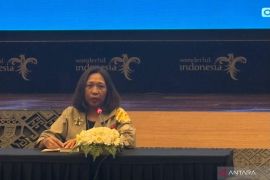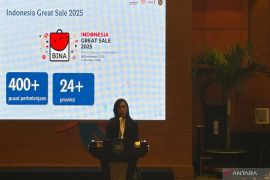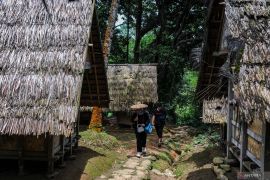Do not forget that you are from a red zone, so ensure that you are healthy.Jakarta (ANTARA) - An epidemiologist confirmed that tourists in good health from red zones, or areas with high risk of COVID-19 transmission, can still holiday in yellow zones, or areas with low risk of COVID-19 transmission.
"Do not forget that you are from a red zone, so ensure that you are healthy," Chief of the Epidemiology Department of the University of Indonesia (UI) Dr Tri Yunis stated during an online discussion monitored here on Wednesday.
The epidemiologist cautioned that if tourists are unhealthy and from a red zone, then they will potentially add to the risk of transmitting COVID-19 to other people.
On the other hand, Yunis emphasized that tourists from green zones, or areas with the lowest risk of COVID-19 transmission, should steer clear from holidaying in red zones.
If people insist on holidaying during the COVID-19 pandemic, then they should first decide the tourist site to visit since the probability of COVID-19 transmission differs in open and closed spaces, he stated.
Open spaces receive the sun’s rays and wind, while closed spaces are devoid of these two elements, and if any, to a very low extent, he pointed out.
Furthermore, Yunis called for broader understanding among mask users on the level of their effectiveness to prevent the spread of COVID-19.
The Task Force for COVID-19 Response had earlier made an appeal to the public to stay at home during the five-day-long holidays since October 28, 2020, to prevent the emergence of new clusters of COVID-19.
“The COVID-19 cases and transmission rate in Indonesia are still high. We advise the public to cancel trips unless they are urgent,” Wiku Adisasmito, spokesperson for the Task Force for COVID-19 Response, remarked at an online press conference here on Tuesday.
Several research studies have drawn a correlation between lower public mobility and a decline in the number of COVID-19 cases and deaths, he noted.
According to a published study (Zhou et al 2020), a 20-percent decline in the mobility of people in a city can lower the curve of COVID-19 cases by nearly 33 percent and delay the emergence of the peak by two weeks.
Another study (Yilmazkuday, 2020) that tracked COVID-19 cases in 130 nations found that if the number of people staying at home rose by one percent, then the number of new cases declined by 70 and the number of deaths dropped by seven per week, he remarked.
Studies found that a decline of one percent in the number of people using public transport facilities at bus terminals, railway stations, and airports can lower the number of new cases by 33 and the number of deaths by four per week, he stated.
Adisasmito recalled that the long weekend on August 20-23, 2020, had raised the curve of COVID-19 cases in Indonesia and given rise to new COVID-19 clusters.
"This occurred due to crowds of people at several places during the holidays," he pointed out.
On October 18, 2020, Indonesia had recorded an improvement in the handling of the COVID-19 pandemic. The percentage of active COVID-19 cases in Indonesia declined as compared to the previous month to reach 17.69 percent, which was lower than the global percentage of 22.54 percent.
Meanwhile, Indonesia's current cure rate stood at 78.84 percent, thereby surpassing the average cure rate of 74.67 percent for COVID-19 patients worldwide.
The government has declared collective leave on October 28 and October 30 this year, as October 29 is a national holiday that marks Prophet Muhammad’s birth anniversary. October 31 is a Saturday, while November 1 falls on a Sunday. Related news: COVID-19: People advised to stay at home during long holiday
Related news: Bio Farma to clinically test Red and White vaccine
Translator: Muhammad Zulfikar/Suharto
Editor: Rahmad Nasution
Copyright © ANTARA 2020












